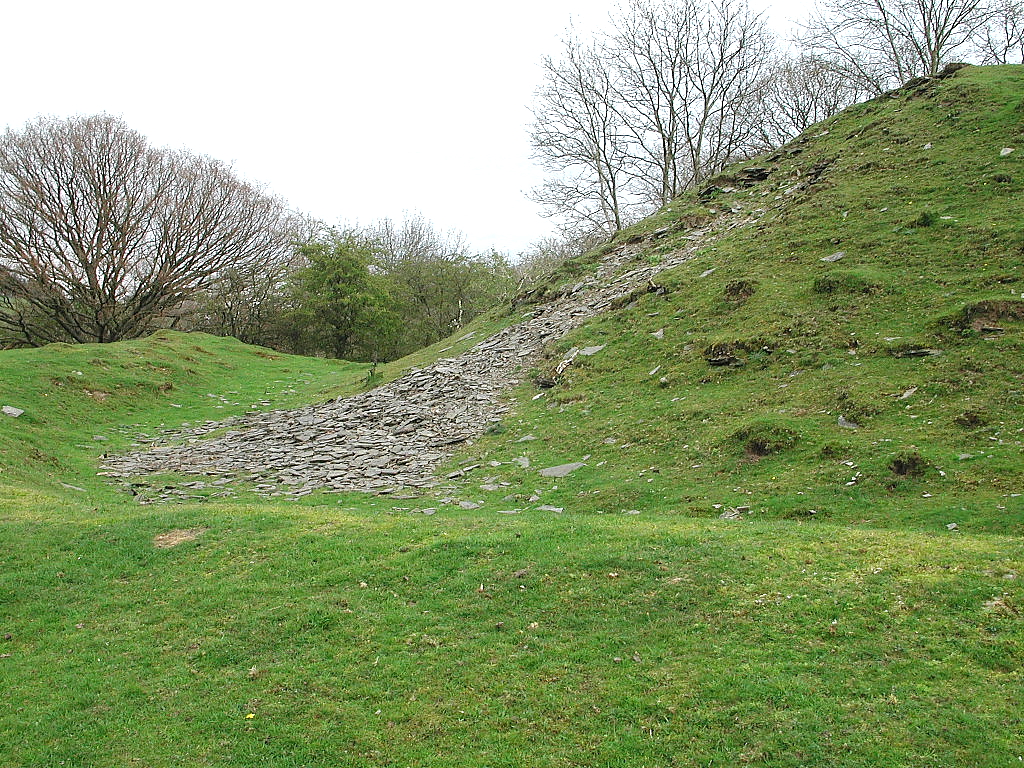|
Just south of the current 'entrance' is a protruding wall facing, nearly at right-angles to the run of the curtain wall. Possibly this was a window for a lean-to building or this may even mark the site of the now lost gateway. The castle was four square, apparently with a D-shaped tower at each corner. The south east tower (above) is now best preserved and seems to have walls about 5 feet thick. A minimal defensive thickness, and quite outdated by 1284! The north west tower may have been slightly bigger than its companions and might consequently have been a keep. Much of the west side of the castle has been damaged by the later railway cutting and in several places the core of the old curtain and towers hang precariously over the precipice. The mortar still seen between the stones of the walls is now utterly decayed and without urgent attention it seems likely that more of this failed castle will soon disappear.
Paul Martin Remfry

 After visiting this page, please take the time to visit Mr Remfry's own web site for more up to date information about his published works, and to learn how his research approach to the study of castles is winning widespread acclaim from the academic community. The site features many of Mr Remfry's own photographs, short descriptions of his published works, as well as planned works for the future. Best of all, you can purchase any of Mr Remfry's published titles at very reasonable rates via the easy-to-use order page. After visiting this page, please take the time to visit Mr Remfry's own web site for more up to date information about his published works, and to learn how his research approach to the study of castles is winning widespread acclaim from the academic community. The site features many of Mr Remfry's own photographs, short descriptions of his published works, as well as planned works for the future. Best of all, you can purchase any of Mr Remfry's published titles at very reasonable rates via the easy-to-use order page.
Ever wonder what new and exciting things are happening in the field of British castle research? Visit Paul Remfry's web site and find out for yourself!
 http://www.castles99.ukprint.com/ http://www.castles99.ukprint.com/
 Additional Photographs of Aberedw II Additional Photographs of Aberedw II
 Learn about historic St Cewydd's Church at Aberedw Learn about historic St Cewydd's Church at Aberedw
 Other Titles by Paul M. Remfry Other Titles by Paul M. Remfry
|

















 After visiting this page, please take the time to visit
After visiting this page, please take the time to visit 